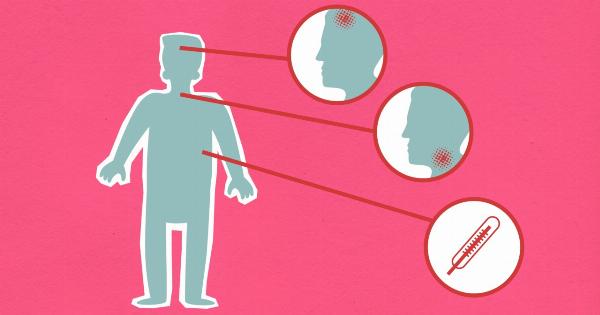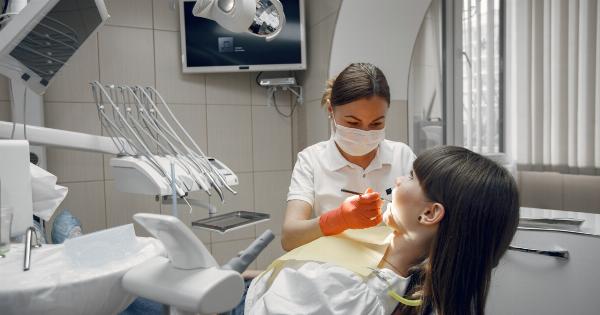Menopause is a natural phase in a woman’s life that brings about various physical and hormonal changes. It marks the end of reproductive years, accompanied by a decline in estrogen production.
While menopause is a normal part of aging, it can also increase the risk of certain health conditions, especially for women with pre-existing medical conditions such as diabetes and obesity.
Understanding Menopause and Its Effects
Menopause typically occurs between the ages of 45 and 55, with an average age of 51. During this transition, the ovaries stop releasing eggs and estrogen production decreases significantly.
As a result, women may experience symptoms such as hot flashes, night sweats, mood swings, vaginal dryness, and changes in libido.
However, beyond these well-known changes, menopause can also have an impact on women’s overall health. The decline in estrogen levels may lead to a higher risk of cardiovascular disease, osteoporosis, and obesity.
The Link Between Menopause and Diabetes
Diabetes is a chronic condition characterized by high levels of sugar in the blood.
There are two main types of diabetes: type 1, which often develops in childhood or young adulthood and requires insulin therapy, and type 2, which is more common in adults and is often associated with lifestyle factors such as obesity and physical inactivity.
Postmenopausal women are more susceptible to developing type 2 diabetes due to hormonal changes and age-related weight gain.
Estrogen plays a vital role in maintaining insulin sensitivity, and its gradual decline during menopause can lead to insulin resistance, a precursor to type 2 diabetes.
The Impact of Obesity on Menopausal Women
Obesity, defined as having a body mass index (BMI) of 30 or higher, is a growing epidemic worldwide.
It not only increases the risk of various diseases such as heart disease, stroke, and certain cancers but also exacerbates the health challenges faced by menopausal women.
Firstly, obesity can disrupt the hormonal balance in women, leading to irregular menstrual cycles and worsening menopausal symptoms.
Additionally, adipose tissue (fat cells) acts as an endocrine organ, producing inflammatory substances that can interfere with insulin action and contribute to insulin resistance and diabetes development.
The Connection Between Menopause, Diabetes, Obesity, and Cataracts
Cataracts, also known as a waterfall, refer to the clouding of the lens in the eye, resulting in blurred vision. It is an age-related condition that primarily affects individuals over the age of 40.
However, menopausal women with diabetes and obesity face an even higher risk of developing cataracts.
Several factors contribute to the increased risk of cataracts in this population group:.
1. Oxidative Stress:
Menopausal women often experience increased oxidative stress due to the decline in estrogen levels. Oxidative stress results from an imbalance between the production of free radicals and the body’s ability to neutralize them.
It can accelerate the development of cataracts.
2. High Blood Sugar Levels:
Diabetes is characterized by elevated blood sugar levels. Prolonged high blood sugar damages the proteins in the lens of the eye, leading to the formation of cataracts.
3. Advanced Glycation End Products (AGEs):
AGEs are compounds formed when proteins or fats combine with sugar molecules. They can accumulate in various organs and tissues, including the lens of the eye. AGEs contribute to the development and progression of cataracts.
4. Inflammation:
Obesity and diabetes often involve chronic low-grade inflammation throughout the body. Inflammation can impact ocular health and contribute to the progression of cataracts.
Preventive Measures for Menopausal Women with Diabetes and Obesity
Although menopausal women with diabetes and obesity are at a higher risk of developing cataracts, there are preventive measures they can take to mitigate this risk:.
1. Manage Blood Sugar Levels:
Keeping blood sugar levels within a target range is crucial for preventing or slowing down the progression of cataracts. Regular monitoring, appropriate medication, and a well-balanced diet can help achieve stable blood sugar levels.
2. Maintain a Healthy Weight:
Losing excess weight and maintaining a healthy BMI can improve insulin sensitivity and reduce the risk of cataracts. A combination of healthy eating, regular physical activity, and lifestyle changes can contribute to weight management.
3. Antioxidant-Rich Diet:
Eating a diet rich in antioxidants can help combat oxidative stress and reduce the risk of cataracts. Foods such as fruits, vegetables, nuts, and seeds are excellent sources of antioxidants.
4. Regular Eye Exams:
Menopausal women with diabetes and obesity should prioritize regular eye exams to detect and monitor any signs of cataracts or other eye conditions. Early detection can lead to timely intervention and appropriate treatment.
5. Control Inflammation:
Reducing inflammation through a healthy lifestyle, including regular exercise, a balanced diet, and stress management techniques like meditation or yoga, can benefit the overall health of menopausal women and potentially reduce the risk of cataracts.
Conclusion
Menopausal women with diabetes and obesity face a higher risk of developing cataracts or waterfall due to a combination of hormonal changes, elevated blood sugar levels, and increased oxidative stress.
By implementing preventive measures such as managing blood sugar levels, maintaining a healthy weight, and adopting an antioxidant-rich diet, these women can reduce their risk and protect their eye health. Regular eye exams and focusing on inflammation control are also essential components of a comprehensive approach to maintaining overall well-being during menopause.





























